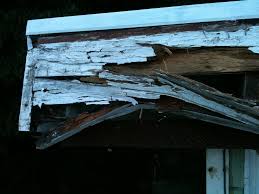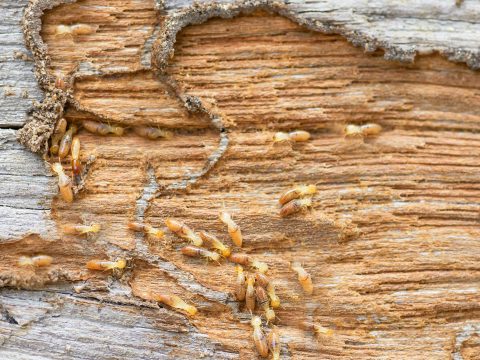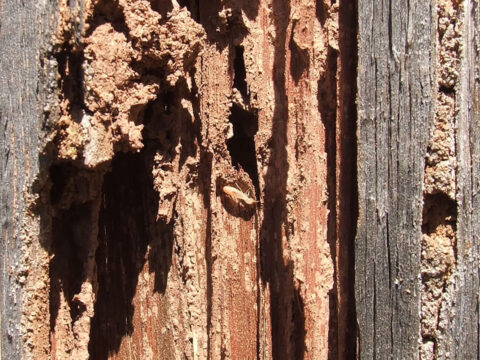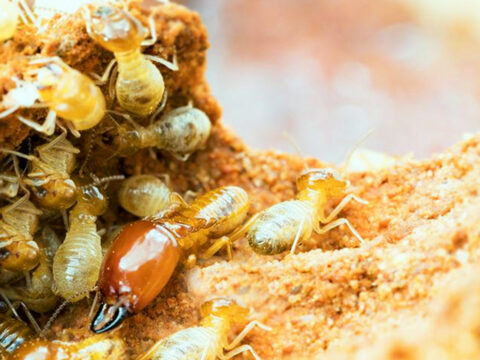What do termite pellets look like?
January 5, 2016Our Safety = Your Peace of Mind
October 5, 2017Each week we receive phone calls from concerned homeowners wondering, “What’s causing the damaged wood on the outside of my house?” The answer to this question is not always simple. To the untrained eye, what looks like termite damage may actually be dry rot – and what looks like peeled or chipped paint may be extensive termite damage hiding right beneath the surface.
So what are the differences between the two? Let’s start with a quick definition:
Dry Rot is defined as the “decay of seasoned timber caused by fungi that consume the cellulose of wood leaving a soft skeleton which is readily reduced to powder.” Many times, dry rot is activated by moisture, although by the time it is discovered, the effected wood is already very dry. Generally dry rot is found outside; you’ll seldom see it indoors. It generally starts at the surface and goes straight through the wood.
Now that we know what dry rot is and what causes it, let’s discuss how to identify it. As the photo below shows, in the case of dry rot, the damage is usually brown, black and/or ashy gray in color. It can make wood appear to be dry and flakey or puffy and full of small spores.

Now let’s take a look at termite damage. As the name suggests, it is wood damage that is caused by termites that eat away at the affected areas. If you suspect termite infestation, cut away a piece of wood at the site, if possible. Different types of termites leave distinctly different patterns of damage in wood.
- Subterranean termites devour soft wood and usually like to eat along the grain. This creates a distinct honeycomb pattern in the wood. It is very important to stop subterranean termites as soon as an infestation is discovered. Why? The answer is simple – without intervention, subs multiply quickly (some colonies contain millions of termites) and spread – creating considerable damage to your home, fences and anywhere else that they choose to go.
- Drywood termites excavate large sections of wood by chewing along and against the wood grain. Their appearance is serious, but less so than most subterranean types. Drywood colonies usually number a few thousand members and eat roughly 1/2 a pound of wood per year.

(If you’d like to see an example of both dry rot and termite damaged wood, check out this short video.)
So, what should you do if you see damaged wood on your house?
It can be tempting to pat damaged wood, but all that will lead to is lots of unsightly holes and crumbly wood. Instead, your best solution is to contact the professionals at Chem Free to schedule a free inspection. Our licensed experts will not only help you identify the wood damage, but they will also look around for active termites, allowing you to have any necessary treatments and custom wood repairs done at the same time – we don’t just find problems, we give solutions. Visit our website at www.chemfreeexterminating.com > Our Services > Custom Wood Repair for more information.



